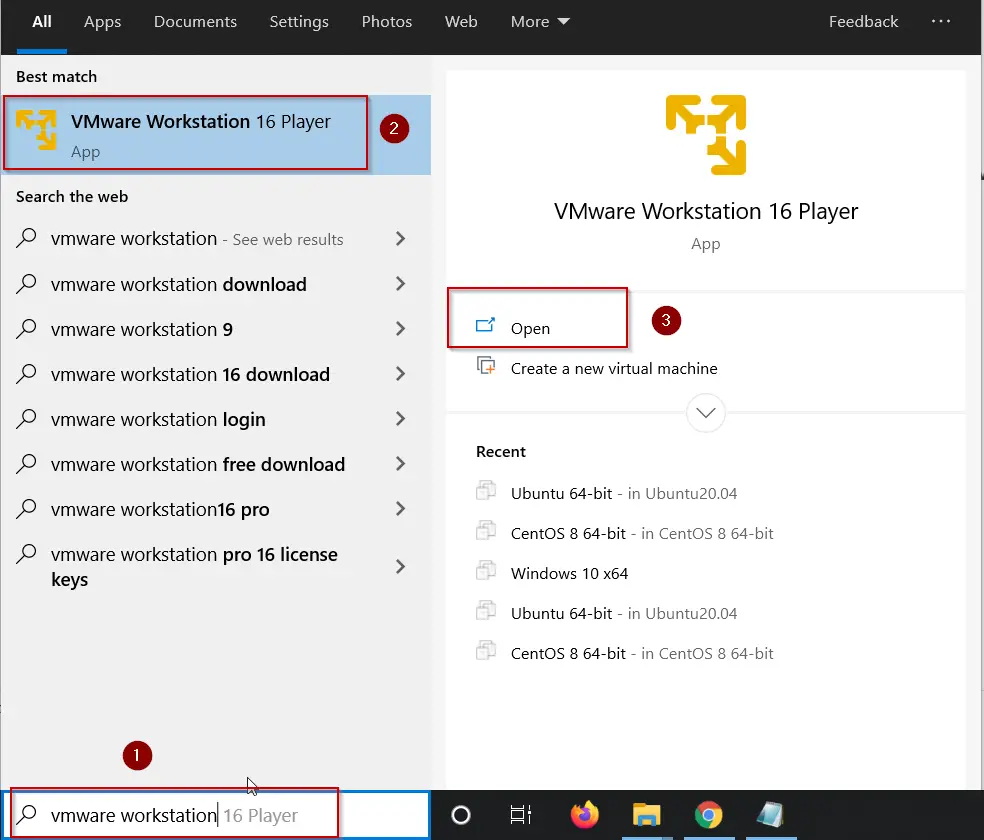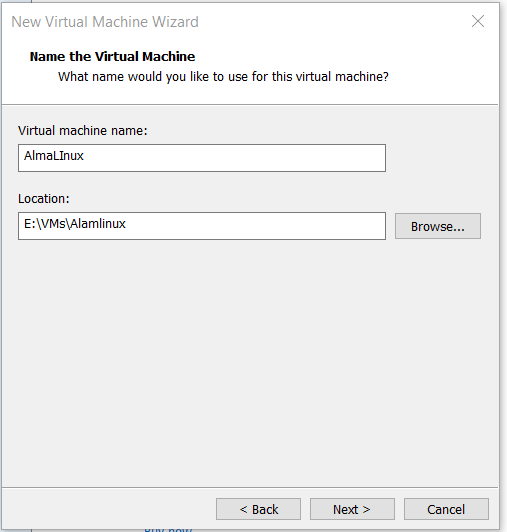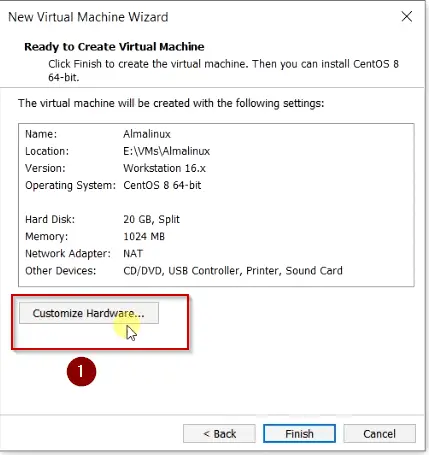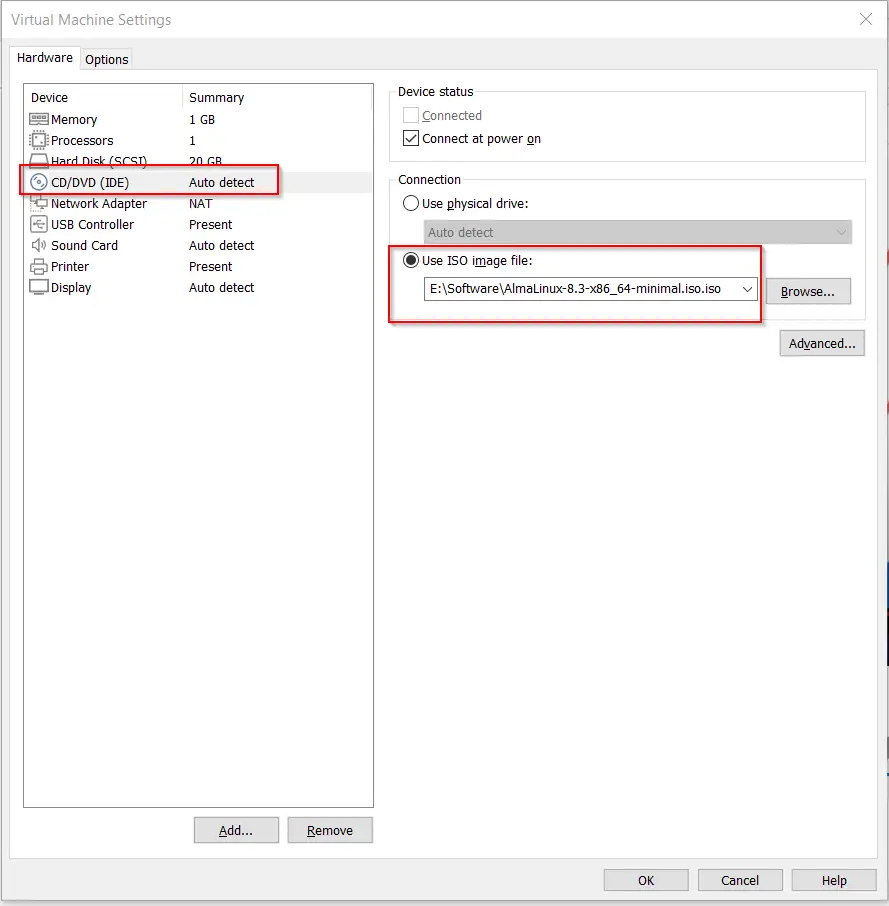AlmaLinux is in the market to fill the gap by the Demise of our beloved CentOS. As soon as the Stable version of AlmaLinux released, I decided to write this article on “How to install AlmaLinux” in VMware. Because as a member of the FOSS community, it’s our responsibility to test AlmaLinux and contribute to its future development.
Why AlmaLinux?
The day when RedHat CTO Chris announced that Centos 8 will be dead now and there will only be a CentOS stream. All the CentOS lovers and companies were in shock. To keep the open-source spirit high, the CloudLinux team decided to launch AlmaLinux as a replacement for CentOS 8 with the “Forever Free slogan“. AlmaLinux is developed by the CloudLinux team and open source community. It’s also based on RHEL (RedHat Enterprise Linux) 8 fork. Alma word is a Latin word, which means “soul”. Big applause for the CloudLinux team to keep this soul alive.
I was part of the AlmaLinux Launch party today @30th March 2021 and cherished the historic moment of my community.

Requirements to install AlmaLinux 8 in VMware
- Vmware Workstation Player 15 or 16 (it’s free for personal use)
- 1 Virtual CPU and at least 1 GB RAM
- Minimum 20GB of hard disk space
- Take a backup of data, if required
- Internet connection, as it requires to download some packages online during installation
Check out these posts on VMware Workstation installed on your Host system, if not installed already –
Download AlmaLinux 8.3 stable iso
Visit “https://repo.almalinux.org/” and select your AlmaLinux mirror link and download the “AlmaLinux 8.3.iso” image as per your preference. I have downloaded “AlmaLinux-8.3-x86_64-minimal.iso” for this post. Also, you have the option to download a full package DVD iso. Alternatively, click on this download button to avoid all hassles.

How to Install AlmaLinux 8 in VMware
Follow these simple steps to install AlmaLinux 8 as a Virtual machine. If you have experience installing CentOS, then you will find instructions same for AlmaLinux also. Generally, You can install any Linux flavour like Ubuntu, Linux Mint, RedHat and Fedora easily in VMware workstation Player.
Step1 – Launch VMware workstation player 16
The first step would be to create a virtual machine for AlmaLinux 8 in Vmware Workstation 16. So, open the VMware workstation player in your host operating system. For example, I am using Windows 10 as a host OS.
Look for VMware workstation in Windows search bar and click Open

Step2 – Create a New virtual machine
Click on Create a new virtual machine, it will start a new AlmaLinux VM wizard.

Step3 – Select media “I will Install operating system later“
On the Media selection page, you have three options.
- Installer Disc – if your laptop or PC has CD/DVD drive and you love to burn iso images to CD’s and Dvd’s (old school method). You can select this option. Your physical drive will be visible as /dev/sr0 and you just need to insert the installer disc, you prepared and click on Next.
- Installer disc image file (iso) – using this option, you can just browse for your downloaded ISO on your laptop or PC.
- I will install the operating system later – if you are not willing to install Operating system immediately or you are not ready with AlmaLinux iso CD or image, you can select this option. if you will continue using this option, it will create a new Virtual machine for you.
I will choose the “install the operating system later” option to showcase each and every step involved to install AlmaLinux in VMware Player -> Click Next.

Step4 – Choose Guest OS for VM
Select “Guest operating system” as Linux and Version as “Centos 8 64-bit” in wizard-> Click Next.
Note:- AlmaLinux is not listed in dropdown currently. But it’s the replacement of CentOS 8. So you can select CentOS 8 64-bit as the version.

Step5 – Provide VM Name and Location
Add the name and location of the Virtual machine. For example, I have provided the name as “AlmaLinux” and location as “E:\VMs\Alamlinux” -> Click Next.

Step6 – Specify Disk size for AlmaLinux VM
Now it’s time to define your virtual disk size. Generally, 20GB is enough for AlmaLinux or even any other Linux installation. We will also go with the default 20 GB disk size. Choose the “split virtual disk into multiple files” option-> Click Next.
A quick explanation of options –
Store virtual disk as a single file – You can select this option, but I won’t recommend this. In case you want to copy or move this VM to another PC or laptop, Managing a single file of 20GB or more would be difficult.
Split virtual disk into multiple files – Management of Virtual machine disk files is easy but may have some performance impact due to large files.

Step7 – Review and Customize hardware
On the next screen, click on “Customize hardware” and increase RAM size from 1024 MB to 2048 MB, If you have enough memory in your pc. Otherwise, you can leave it 1024 MB only.


Click Close and Finish.
Step8 – Install AlmaLinux 8.3 from iso image on Virtual machine
Once your Virtual machine is ready, now you need to provide the path of the AlmaLinux 8 iso image. For that, you need to click “Edit virtual machine settings“

Select “CD/DVD (IDE)” in the left pane and then click on the “use iso-image” file option. Afterwards, click “Browse” and provide the path to your “AlmaLinux-8.3-x86_64-minimal.iso” image.
Then click OK.

Step9 – Power on virtual machine
Click “Play Virtual Machine” to boot your virtual machine from select AlmaLinux iso image.

Once the virtual machine is powered on and successfully started as boot from ISO – Select option “Test this Media and install AlmaLinux 8” with help of arrow keys on your keyboard and hit Enter.
Why I have selected this option? Because I want to test my ISO image to avoid package missing errors during installation.

Step10 – Select Your preferred language
Once you get Installation Wizard, Select your preferred language. For example, I will select English (United States). Click continue.

Step11 – Select partitioning and Root password
On the installation summary page, you have different options like Software, System, language support, Software selection, Kdump and user settings. Currently “Begin installation” option is greyed out as shown in the image. To make it available, You need to remove warnings (Yellow patches) from the “Installation destination” and “Root password” options. Follow these two actions –
1.) To get the option of “Begin installation“, You need to click “Installation Destination” in the system section.

> Leave all options as default > click “Done.
* Note – If you are a Linux pro, you can select custom instead of automatic and do partitioning as per your wish.

2.) Setup root password to enable the root account, as it’s mandatory for security also.
Go to user settings – Click the “Root password” option.

– Give complex root password and click Done.

Now Begin Installation option will highlight. Click “Begin Installation” to move further.

Now, AlmaLinux installation will begin. Get a cup of coffee for yourself and wait for the installation to complete. It will take a while to complete.

Step12 – Reboot your AlmaLinux VM
Once installation finishes, Tap on “Reboot“.

How to Activate and configure AlmaLinux 8 network
Now AlmaLinux installation has been completed and you have logged in with the root user. Let’s activate the network interface.
Most of us who are new to Linux, skip this step and really wonder later for these common issues or questions.
- Not able to see an IP address in AlmaLinux
- Unable to connect to the internet or ping any website
- Wondering how to activate the network in AlmaLinux?
So these steps are really important, to enable and activate the network interface in AlmaLinux 8 after installation
Step13 – Run “nmtui” command to setup Network
Run command “nmtui” from AlmaLinux prompt. Then, you will see the interactive “Network Manager TUI” console.
[root@localhost]# nmtui
# in case of sudo user
[root@localhost]$ sudo nmtui
Click “activate a connection” using the down arrow key on your keyboard.

select your network interface (ens33 in my case). Then, click activate. Click back and then select Quit. You are done.

Further, You can also use this wizard to provide the manual IP address or setting up the hostname for your AlmaLinux 8. For example, you can click on “Edit a connection” and then select DHCP or manual in the provided field. You can also disable or enable IPV6 using this option.
Select “automatically connect” and press OK to connect the network interface automatically on the next reboot.
Select Back and then Quit.

You can also use this wizard to set up the hostname. You just need to select the “Set system hostname” option and provide the name of your AlmaLinux. Click “OK” and then “Quit” to get out from Wizard.

Run ifconfig command to check the IP address.
Alternatively, you can also run “ip addr” command, the same way used in Ubuntu Linux to know the IP address.
[root@localhost]# ifconfig -a or [root@localhost]$ sudo ifconfig -a

Till this point, we have Install AlmaLinux and we have configured the network. But it is a minimal installation. If you want “Graphical user interface“. You need to install groups.
Step14 – List and install groups in AlmaLinux 8
To list groups or environments available, run this command
[root@localhost]# yum group list
or
[root@localhost]$ sudo yum group list
Check out my other post, if you are getting the yum command not found error.
Once it will sync up packages metadata, you will get a list of groups and environment groups available. For example,
- Server with GUI
- Minimal installation
- Workstation
- Virtualization Host
- Custom operating system
You can select your preferred environment group, I will select “Workstation” for this post.
Run this command to install the workstation group.
[root@localhost]# yum group install "Workstation"

Press “y” to download and install workstation packages. It will take a while to download all dependent packages from the internet and then install it to your system.
Once installation is done, you can run the “startx” command to start GUI.
[root@localhost]# startx & or [root@localhost]$ sudo startx &
Follow the onscreen wizard to complete the “Gnome initial setup” wizard. Select your Language and click Next.

Select keyboard layout (Typing) and click Next.
Then switch on or switch off your location services in wizard and click next.
As a final step, Connect your online account, if you want.

Congratulations!! you are done with AlmaLinux 8 installation and Now you can test it, report bugs and help the community 🙂
How to install VMware Tools on AlmaLinux 8
Time to know VMware tools. These tools are really important for the guest operating system. Because it helps to improve the functionality and management of Virtual machines.
It helps to reduce problems like –
- Display related (low resolution, colour depth etc.)
- Restricted mouse movement and abrupt clicks
- Sound issues
- Copy-paste issues
- Network related issues and many more.
You generally don’t need to install VMware tools in AlmaLinux, because you get it by default after installation. Let me show you how to check the version of VMware Tools.
Step15 – How to check VMware tools version
To check any existing version of the VMware tool installed. Run this command.
$ vmware-toolbox-cmd -v
For example, Version 11.1.0.19887 is installed in my AlmaLinux.

In case you don’t have VMware tools installed or want to install from scratch. Follow these steps-
Step16 – Install VMware tools in AlmaLinux 8
-> Log in to the virtual machine using root or sudo account
-> Run dnf or yum command to install VMware tools
$ dnf install open-vm-tools or $ yum install open-vm-tools
-> Once installation completes successfully. Then, Restart your Virtual machine.
-> Check VMtools version as shown in step 15
Video Tutorial
Those who don’t like reading, Enjoy this video on “How to install AlmaLinux 8 in VMware Workstation Player 16“.
Conclusion
CloudLinux team will soon come with a script to upgrade Centos8 to AlmaLinux. I will keep a close eye on this and as soon as it will be released. I will be publishing the article on how to upgrade from CentOS 8 to AlmaLinux 8. This will be helpful for the CentOS fans and companies, those who are disheartened due to the demise of Centos 8. Additionally, looking to upgrade their environment hosted on CentOS 8.
I hope you enjoyed my article on how to install AlmaLinux. I am expecting, that you will also install it and report bugs or issues to the community.
You can join the Reddit page of AlmaLinux for more updates in future. Also, if you have any questions in mind, you can check out their FAQs.

![How to fix the “Yum command not found” error in Linux [Update 2023]](https://cloudlinuxtech.com/wp-content/uploads/2022/04/How-to-Fix-Yum-command-not-found-error-270x161.png)

![Guide with Screenshots – How to Install Zabbix on Rocky Linux/AlmaLinux 8.5 [Update 2023]](https://cloudlinuxtech.com/wp-content/uploads/2021/11/How-to-install-Zabbix-5.4-on-Rocky-Linux-or-AlmaLinux-270x161.png)